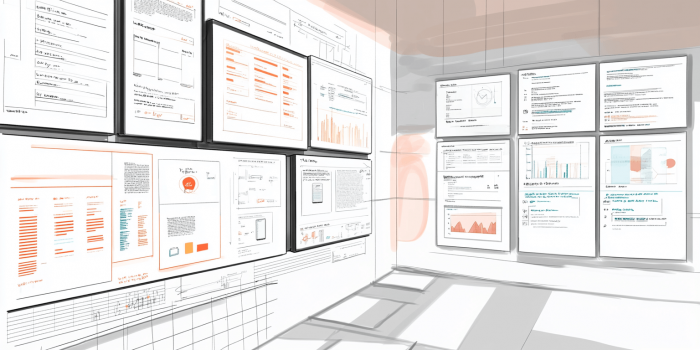The need for a full-featured online store arises when a business wants to systematically manage its online sales – from the first customer visit to payment, delivery, and repeat orders. At this stage, the cost becomes one of the key issues – and at the same time one of the least transparent. The range of prices on the market is broad, and the budgeting process itself often seems extremely confusing. While some expenses are visible from the start, such as development or design, others emerge later in the form of support, refinements, and further scaling. That is why it is important to understand in advance how much does it cost to develop a turnkey eCommerce website in different configurations and what exactly affects the final amount. So let’s take a closer look, paying particular attention to common mistakes and practical recommendations for those who are just considering launching such a platform.

What is included in basic eCommerce website development
Before moving directly to the financial aspect, let’s look at the specifics of creating a website for an online store – particularly the basic stages that form the foundation of any project:
| Structuring the website. | Every project begins with consultation and planning. A prototype is created that defines the sections, connections between pages, navigation logic, and user behavior scenarios, allowing the navigation to be well thought out in advance and user-friendly. |
| Installing a CMS or framework. | This stage determines the website’s technological base – for example, whether it will be OpenCart as a universal solution for medium-sized businesses or Yii2 for projects with a more complex structure. The chosen approach directly influences the future development of the website and defines the scale of upcoming integrations. |
| Developing responsive design. | To ensure a quality user experience, the interface must look and function equally well on both smartphones and desktops. That is why great attention is paid to responsiveness, layout testing, and overall usability. |
| Setting up the product catalog. | A flexible system of categories, attributes, filters, and connections between items is built. This is critical for fast product search and convenient interaction, especially if data export to formats like CSV or XML is required. |
| Implementing the order form. | A well-designed cart with a minimal number of steps to complete the purchase reduces the percentage of abandoned orders. It is important for the interface to be simple and intuitive, removing any barriers even for new users. |
| Integrating payment systems. | Integration with banking services, payment gateways, and third-party providers is done via API, with mandatory consideration for future support and overall transaction security. |
| Integrating delivery services. | Connecting these modules helps determine the cost and available delivery methods based on the region. In more complex projects, such solutions are linked to logistics platforms or CRM systems for automated order processing. |
How the turnkey project budget is formed
The cost is calculated based on the business goals, the website structure, and the level of technical requirements. While one store may be limited to basic functionality, another may require more advanced customization with non-standard filters and complex analytics. Even the choice of technology matters – for example, a relatively simple store on WooCommerce and a system built on Laravel differ both in capabilities and in the approach to implementation. This is explained in more detail in the article about developing a clothing eCommerce website, which clearly illustrates how budget formation varies depending on the selected solution.
However, this does not mean that a more expensive website is necessarily more complex or larger in scope. Very often, the key role is played by the details – the catalog configuration, third-party service integrations, payment specifics, or unique delivery terms. Understanding this, we focus on clarifying all details from the very beginning, carefully listening to the client’s needs and suggestions. By working in this format, our team always guarantees the result the client expects, fully staying within the agreed budget.
Additional expenses after launch
When discussing how much it really costs the development of a turnkey eCommerce website, our agency does not limit itself to the core expenses. We also account for accompanying costs that arise after the project is launched, focusing primarily on the following:
- Domain and hosting fees. Once development is complete, the domain name must be renewed annually, and hosting services must be paid to ensure the website remains live and stable.
- SSL certificate renewal. Along with hosting, the security certificate is also renewed – this ensures a secure connection and prevents loss of trust from users and search engines.
- Ongoing SEO support. To maintain and improve search rankings, regular work is needed on content, technical optimization, and structural updates.
- Technical support and updates. Any website will periodically require plugin updates, adaptation to new browser versions, and fixing technical errors to ensure stable and uninterrupted performance.
- Backup setup. To prevent data loss risks, regular backups should be created and periodically checked – especially important when the website handles real orders.
- Functionality improvements. As new business needs arise, additional filters, data export to CSV or XML, ERP integrations, or changes to specific logic may be needed, requiring extra development costs.
What happens when you cut costs during development
Cutting costs at the initial stage often seems like a pragmatic decision – especially for new businesses or projects with limited resources. But later it becomes clear that the simplifications made for the sake of price have become a constant source of technical limitations. What was meant to serve as a foundation for growth ends up holding the business back. Changing the order process logic becomes difficult, updating the catalog is problematic, and implementing new features is more expensive than building them from scratch. And the mobile experience must not be overlooked – read more on why a responsive eCommerce website is critical for sales, especially when it comes to stable performance across devices and browsers.
The biggest problems arise when the project starts going beyond its initial scenarios. At some point, it turns out the chosen CMS does not support the required integrations, and each update risks breaking the entire system. Instead of evolving, the business ends up constantly patching technical issues, limiting marketing and product initiatives. This drains resources and erodes trust in the platform that was supposed to be a point of stability. At this point, cost-cutting stops being profitable and becomes a source of unpredictable expenses that accumulate slowly but inevitably.

How to avoid unnecessary costs and mistakes when ordering development
Clarifying the key aspects of the project in advance almost always helps avoid implementation issues down the line. Understanding this, we as a responsible contractor recommend that clients take the following steps before starting the work:
- Agree on the full list of features and website pages. When the required elements are clearly defined upfront, it is easier to estimate the scope of work and avoid unnecessary costs due to unforeseen changes.
- Decide on the CMS to be used and justify the choice. The selected content management system must match the project’s business goals and capabilities, considering SaaS integration and future expansion.
- Ensure that testing is included in the project budget. Timely internal audits and detailed functionality checks before launch help reduce the risk of technical issues after release.
- Discuss acceptable website loading speed. Fast page loading improves user behavior and is a critical factor for achieving the planned ROI.
- Allocate a budget for further development. Predefined expenses for marketing and store promotion allow for timely implementation of necessary changes, supporting the project’s consistent growth.
- Request detailed reporting broken down by stages. Transparent and regular reports help monitor progress in real time and make necessary project adjustments at the right moments.
Need an eCommerce website – modern, reliable, functional, and fairly priced? No problem. Our specialists will thoroughly analyze your company’s business specifics, select the optimal platform, and seamlessly integrate its functionality into existing processes. They will also guide you on how to organize an effective category structure for your store and handle ongoing support in line with the agreed strategy and available budget. Reach out – the QuatroIT web studio is at your service!











